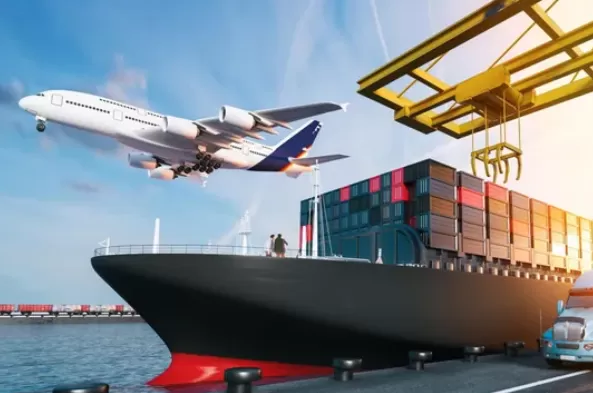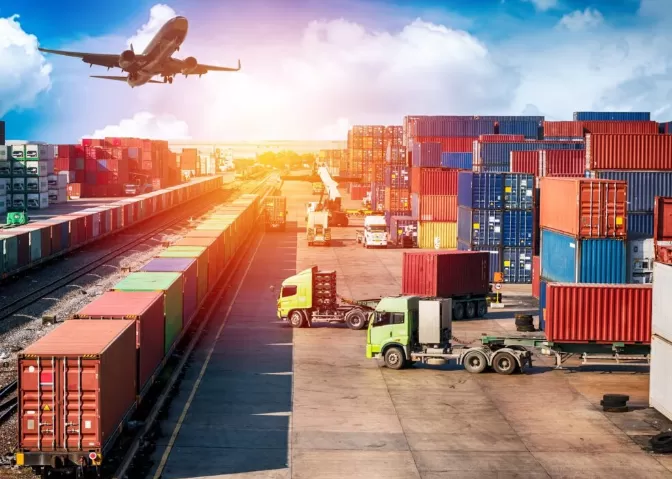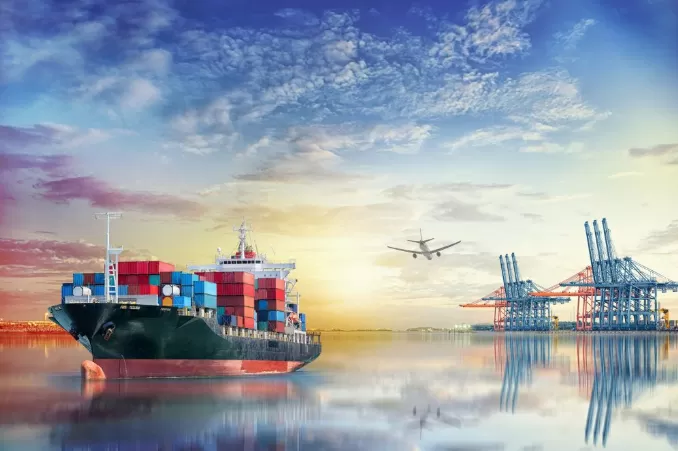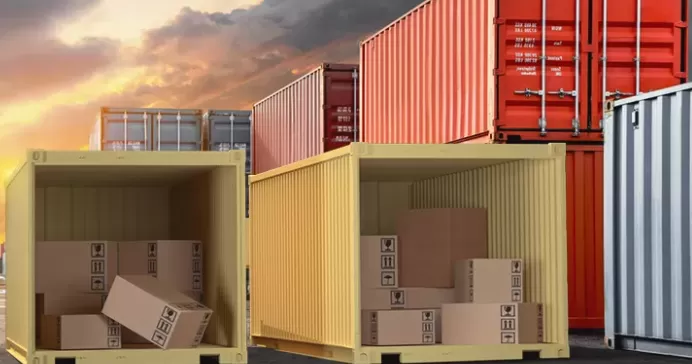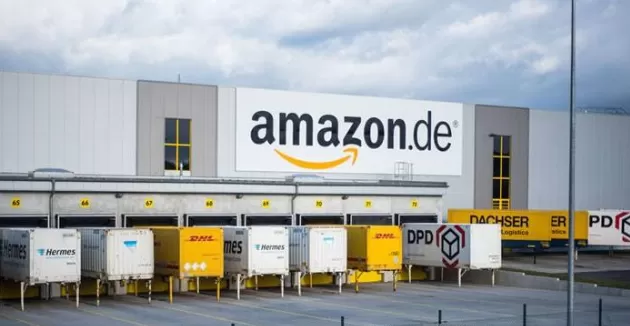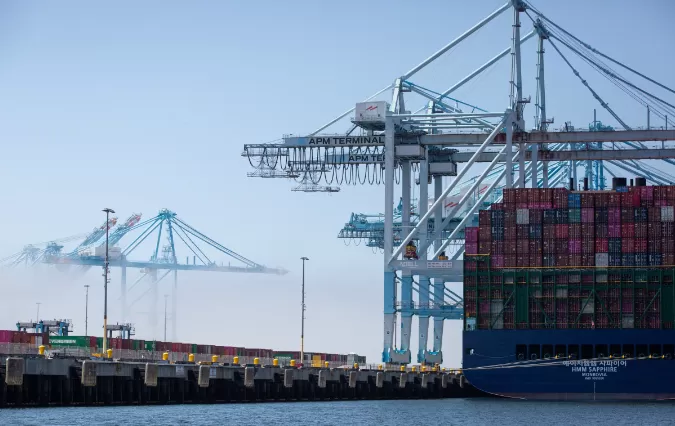Navigating the complex logistics of shipping from China to Minneapolis, a major inland hub, requires careful planning. Choosing the right route and shipping method is critical to balancing cost, speed, and reliability for your supply chain.
Are you ready?
Get real-time quotes for Minneapolis
Get Quotes
This definitive guide provides everything importers, Amazon FBA sellers, and logistics managers need to know. We break down all available options with realistic 2025 data, so you can make an informed decision that protects your budget and timeline.
Highlights
Sea Freight (FCL): 35–50 days | 4,200–6,000/40HC (via West Coast + rail)
Air Freight: 5–10 days | 5.00–9.00/kg (Shanghai→Chicago/Minneapolis)
Express (DHL/UPS): 3–6 days | 7–16/kg (for urgent sub-70kg shipments)
Key Route: Most cargo routes via Los Angeles/Long Beach ports or Chicago O'Hare (ORD) airport
Customs Must-Do: File ISF 24 hours before loading in China to avoid $5,000 fines
Best for SMEs: LCL costs 130–190/CBM (includes ocean freight & delivery, excludes duties)
Peak Season: August–October; rates surge +25%; book 4–6 weeks early
Table of Contents
Shipping Modes Compared
Detailed Breakdown of Shipping Methods
Realistic Costs & Transit Times
Minneapolis Shipping Routes & Entry Ports
Case Study: Midwest Retailer Imports Home Goods
Risks & Pro Tips for 2025
Frequently Asked Questions (FAQ)
Related Shipping Routes
Shipping Modes Compared
Selecting the right shipping method from China to Minneapolis balances cost, speed, and reliability. Minneapolis, being a major inland hub, is primarily served via West Coast ports and Chicago's air and rail infrastructure.
View detailed breakdowns below
|
Shipping Method
|
Estimated Transit Time
|
Estimated Cost
|
Best Use Cases
|
Risks & Considerations
|
|
Air Freight
|
5-10 days
|
5.00−9.00 / kg
|
High-value, urgent goods, small shipments
|
Highest cost; susceptible to airport congestion, weather, and customs inspections.
|
|
Express (DHL/UPS)
|
3-6 days
|
7.00−16.00 / kg
|
Documents, samples, urgent parcels under 70 kg
|
Ideal for small, time-sensitive items; strict weight limits; highest per-unit cost.
|
|
FCL Sea Freight
|
35-50 days
|
4,200−6,000 / 40HC
|
Large-volume, low-value goods
|
Longest lead time; highly affected by port congestion, weather, and inland rail delays. Mind free demurrage/detention days to avoid hefty fees.
|
|
LCL Sea Freight
|
40-55 days
|
130−190 / CBM
|
SMEs with cargo volume under 15 CBM
|
Longer transit than FCL due to consolidation/deconsolidation. Robust packaging required to withstand handling.
|
|
FCL Truck Delivery
|
30-40 days
|
Market-competitive with ocean
|
Time-sensitive bulk goods; alternative to all-water
|
Faster than all-water but affected by inland rail capacity and terminal efficiency. Chicago rail congestion is a key risk.
|
|
Canada Route (Vancouver Port)
|
32-42 days
|
Competitive with US West Coast
|
Alternate route to bypass US West Coast port congestion
|
Requires Canadian border clearance (PAPS eManifest), adding 1-2 days. Suitable as contingency during severe US port congestion.
|
Notes:
Rates typically include: Ocean/air freight, fuel surcharges, origin/destination terminal handling fees, and inland transportation to Minneapolis.
Rates typically exclude: Import/export duties, taxes, customs brokerage fees, importer registration fees, and cargo insurance.
Transit times are estimates only: Actual times may vary due to peak season (Aug-Oct), port congestion, weather, or customs inspections. Winter blizzards in the Midwest can severely delay rail and truck transport.
Recommendation: For shipments to Amazon FBA warehouses, ensure your carrier is Amazon-approved and strictly follow Amazon’s packaging, labeling, and palletizing requirements to avoid delays or rejections.
Data sourced from Freightos 2025, IATA 2024, and industry benchmarks. Rates are estimates and subject to change.
Detailed Breakdown of Shipping Methods
Choosing the right shipping method requires a deep understanding of specific routes, costs, and risks. Here is a detailed, operational guide for shipping to the inland city of Minneapolis.
1. Air Freight: Balancing Speed and Cost
Air freight involves complex hub connections rather than simple point-to-point flights.
Primary Route:
Major Hub Path: Shanghai Pudong (PVG) → Chicago O'Hare (ORD) → Trucking → Minneapolis Warehouse
Direct Path (Less common): Beijing/Shanghai → Minneapolis (limited capacity in passenger flight bellies)
Detailed Timeline Breakdown (Chicago Hub):
Origin Operations (1-2 business days): Pickup, export customs clearance, airport security, and palletization
International Flight (1-2 calendar days): Direct flight to Chicago takes approx. 14 hours, plus flight scheduling
US Clearance & Transfer (2-4 calendar days): Customs clearance, deconsolidation, and truck loading in Chicago
Trucking (1 calendar day): Chicago to Minneapolis transport (6-8 hours plus dock scheduling)
Total Timeline: Plan for 7-12 days to account for potential delays
Best For: High-value electronics, urgent samples, fashion items, marketing materials
2. Sea Freight Port-to-Port: For Logistics Experts
This option covers ocean carriage only, leaving destination port activities to the customer.
Primary Route (West Coast):
Chinese Port (Ningbo/Shanghai) → US West Coast Port (LA/Long Beach) → Rail Transport → Minneapolis Local Rail Ramp
Cost Breakdown (40HC container):
Ocean Freight: 2,800−4,000
Bunker Surcharge (BAF): 500−800
Terminal Handling Charge (THC): 500−700
Total (Port-to-Port only): ≈ 3,800−5,500
Excludes: US customs brokerage, duties, rail drayage, or final trucking (+1,500−2,500)
Key Risk: Customer liable for destination demurrage and detention charges if inland transport arrangements are delayed
Port to port
Get real-time quotes for Minneapolis
Get Quotes
3. FCL Door Delivery: Integrated Container Solution
Comprehensive "Ocean + Truck" solution handling everything from factory to warehouse door.
Core Route: Ningbo Port → Long Beach Port → BNSF/UP Railroad → Minneapolis Rail Ramp → Local Truck → Warehouse Address
Timeline Breakdown:
Ocean Transit: 14-18 days (Ningbo to Long Beach)
Port Operations: 3-5 days (discharge, customs clearance, rail loading)
Rail Transport: 7-12 days (Long Beach to Minneapolis, may extend to 15+ days during peak season)
Truck Delivery: 1-2 days after container release from rail ramp
Total Transit Time: 25-35 days (may extend due to port congestion)
Advantage: Single quoted price avoids hassle of arranging separate trucking, mitigating detention fee risks
4. LCL Door Delivery: Less-than-Container Load Service
"Ocean + Delivery" solution for consolidated shipments, ideal for smaller volumes.
Core Route: Shenzhen Warehouse → Yantian Port → Long Beach Port → LA Deconsolidation Warehouse → LTL Truck → Minneapolis Warehouse
Operational Details:
Consolidation/Deconsolidation: 1-3 days in China (waiting for container fill) + 2-5 days in US (sorting and breakdown)
Pricing: 130−190/CBM (includes ocean freight and delivery, excludes duties/taxes)
Best For: Amazon FBA sellers, e-commerce SMEs, importers with volumes under 15 CBM
Considerations: Confirm forwarder's quote includes all destination fees; ensure robust packaging for deconsolidation handling
5. Door-to-Door: Fully Managed Service
Complete hands-off solution managing entire process from supplier to warehouse.
Service Chain:
Pickup at Chinese Factory → Export Customs → Ocean Freight to US West Coast → US Customs Clearance → Rail Transport → Final Trucking to Door → Empty Container Return
Requirements: Commercial Invoice, Packing List, Power of Attorney for customs
Advantage: Single invoice, point of contact, full visibility, and transferred risk
freight forwarding
Get real-time quotes for Minneapolis
Get Quotes
6. Freight Forwarder: Logistics Coordination
Essential partners providing comprehensive logistics management.
Services Include:
Expert planning based on volume, timeline, and budget
Resource integration with carriers, truckers, and customs brokers
Risk management and emergency handling
Selection Criteria: Request Minneapolis-specific client references and BNSF rail operation experience
7. Amazon FBA Seller Specific Guide
Specialized compliance requirements beyond standard transportation.
Critical Requirements:
Delivery Appointment: Ensure trucking company is Amazon-approved and can self-schedule appointments
Palletization Standards: Strictly follow Amazon's FBA requirements for pallet building, labeling, and packaging before shipping
Clearance Essentials: Match shipper/consignee information with Amazon seller account; use own EIN number for clearance
Realistic Costs & Transit Times
Understanding complete cost breakdown is critical for accurate budgeting.
Sea Freight to Minneapolis (FCL): 4,200–6,000 door-to-door for 40ft container. Includes 28-35 days ocean transit from Shanghai to LA/LB plus 7-10 days rail drayage to Minneapolis.
Air Freight to Minneapolis: 5.00–9.00/kg (Shanghai→Chicago/ORD or Minneapolis/MSP). Includes terminal handling but excludes customs clearance and local trucking.
LCL Shipping: 130–190/CBM for SMEs. Ideal for shipments under 15 CBM.
Minneapolis Shipping Routes & Entry Ports
As a landlocked city, all ocean freight arrives via major ports before inland rail/truck transport.
West Coast Route (Primary): Most common and efficient route via Los Angeles/Long Beach ports with BNSF/Union Pacific rail to Minneapolis.
East Coast/Gulf Route (Alternatives): Possible routing through New York/NJ, Savannah, or Houston based on carrier schedules or West Coast congestion avoidance. Adds significant time (10+ days via rail).
Air Freight Routes: Most cargo enters through major hubs like Chicago O'Hare (ORD), Los Angeles (LAX), or New York (JFK) before connecting flights to Minneapolis-St. Paul (MSP) or truck delivery.
Case Study: Strategic Shipping Choices
Company: North Star Home Decor
Profile: Growing Minneapolis-based online retailer
Challenge: Cost-effective import of 12 CBM home decor items from Guangzhou during Q3 peak season without lead time compromise
Solution:
Selected LCL shipping due to volume
Shipped via West Coast route (Port of Los Angeles)
Partnered with freight forwarder for rail drayage and customs clearance
Cost Breakdown:
Ocean Freight (LCL): 1,920(160/CBM)
Inland Rail & Trucking: $1,100
Customs Clearance & Duties: $730
Total Cost: $3,750
Result: 38-day delivery, 40% savings versus air freight, enabling competitive pricing during high-demand season
Contrasting Case: TechStart Inc. needed urgent component delivery during supply chain disruption. chose air freight via ORD with trucking to Minneapolis. While costing 5,200morethanseafreight,itprevented50,000 in production line downtime, demonstrating strategic cost-benefit decision-making.
FBA
Get real-time quotes for Minneapolis
Get Quotes
Risks & Pro Tips for 2025
Top Risks:
Peak Season Surcharges (PSS): 20-30% rate increases August-October with capacity constraints
West Coast Port Congestion: Potential LA/LB delays impacting rail schedules
Customs Delays: 3-7 day holds from incorrect/incomplete documentation (particularly HS codes)
Winter Weather: Snow/ice in Minneapolis and Chicago disrupting rail/truck operations (December-February)
Pro Tips:
Early Booking: Schedule ocean freight 4-6 weeks ahead during peak season
HS Code Verification: Ensure supplier provides accurate product descriptions and Harmonized System codes on commercial invoices
Multiple Quotes: Obtain 2-3 quotes for drayage from rail ramps to warehouse
Insurance Protection: Secure coverage against loss/damage, especially for high-value goods
Document Preparation: Maintain complete and accurate customs documentation to prevent clearance delays
Frequently Asked Questions (FAQ)
1. Should I ship to Minneapolis via East or West Coast?
West Coast (LA/LB) is typically most direct and cost-effective due to established rail infrastructure. East Coast routes add significant inland transit time.
2. What's better for my business: FCL or LCL shipping?
Use FCL for shipments larger than 15 CBM (faster, cheaper per unit). LCL ideal for smaller shipments (under 15 CBM), paying only for volume used.
3. How long does Minneapolis customs clearance take?
Typically 24-48 hours with accurate, complete documents. Incorrect paperwork can cause 3-7 day delays or longer.
4. What's the difference between air freight and express courier?
Air freight for larger shipments (100kg+) on pallets. Express (DHL/UPS) for smaller, door-to-door parcels under 70kg with faster, integrated service.
5. Do I need a customs broker?
Yes, for commercial shipments. Licensed brokers handle necessary filings (ISF, customs entry) with CBP on your behalf.
6. How can I reduce shipping costs to Minneapolis?
Consolidate shipments, avoid peak season (Q3) shipping, and provide accurate documentation to prevent delays.
7. What's the difference between FCL and LCL door delivery?
FCL door delivery provides dedicated container service with truck delivery. LCL door delivery consolidates shipments with other shippers' cargo with LTL truck delivery after deconsolidation.
8. What are key considerations for Amazon FBA shipments?
Ensure compliance with Amazon packaging/labeling requirements, use Amazon-approved carriers for delivery appointments, and maintain consistent shipper/consignee information between shipping documents and Amazon account.
FBA
Get real-time quotes for Minneapolis
Get Quotes
Related Shipping Routes
freight forwarder from China to Chicago
Shipping from China to Los Angeles
Amazon FBA: Shipping from China to the United States
Shipping from China to Birmingham
Shipping From China To Arizona
Shipping from China to Portland
Shipping From China To New Orleans
Shipping from China to Alaska

 EN
EN
 FR
FR
 ES
ES
 JA
JA
 PT
PT
 RU
RU
 AR
AR
